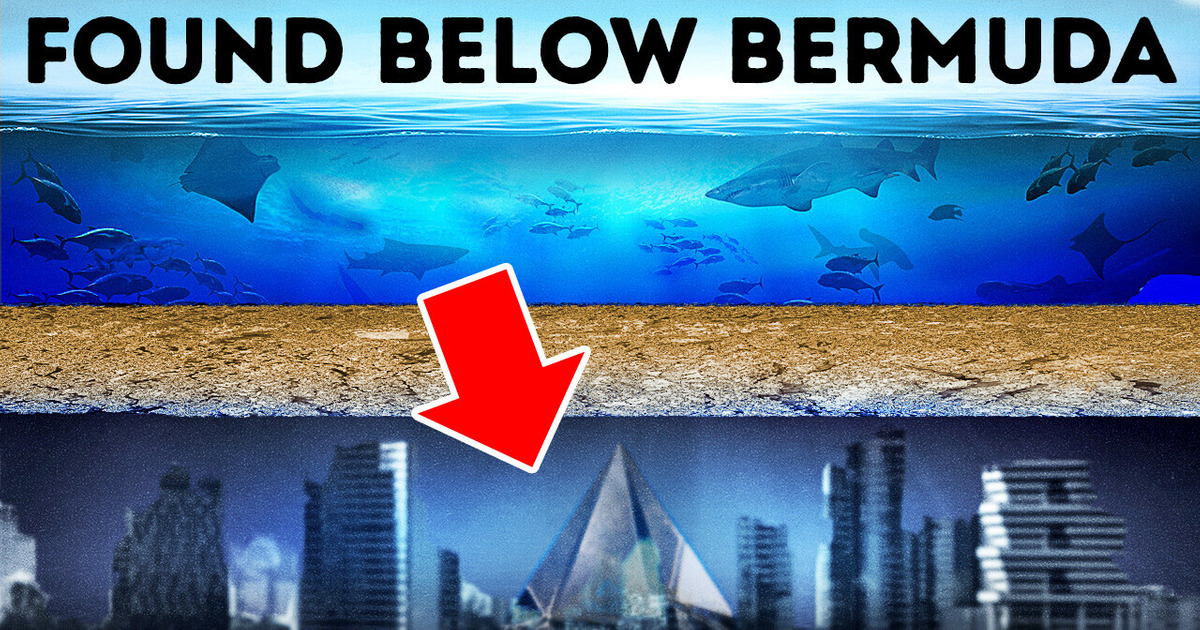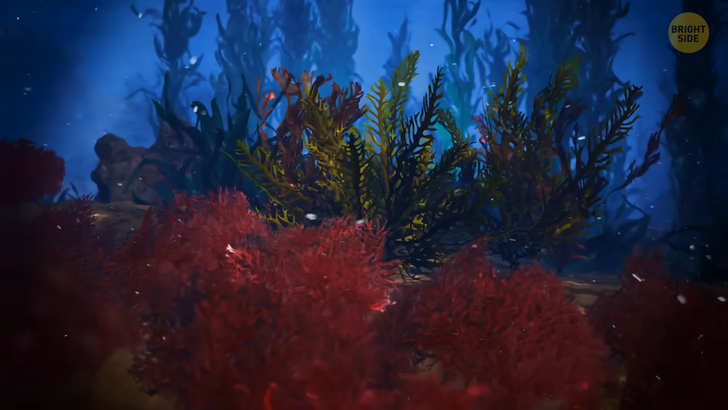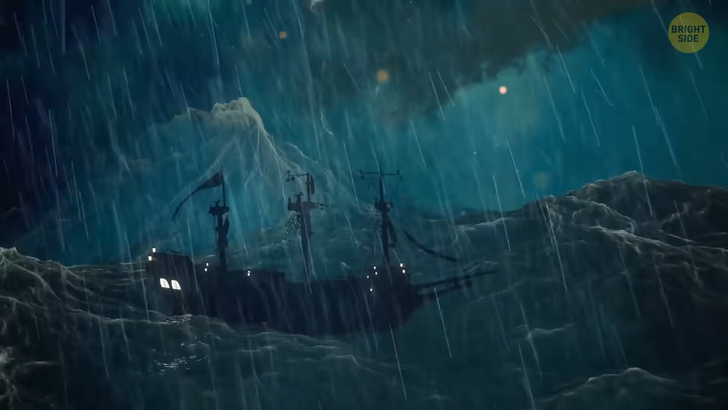15 Times Runway Outfits Looked Very Different on Models and Celebrities


Its ruins lie somewhere in the darkness of the ocean depths, covered in seaweed, damaged by the ravages of time. The city of Atlantis allegedly existed 12,000 years ago. Then it sank, and over centuries, people have been passing stories about it. Many think it was just a regular island.
But so many legends tell about a powerful empire. Atlantis supposedly was one of the wealthiest and most fascinating cities of its time. Your breath would have been taken away if you had stepped through its central gate. Amazing decorations and towering marble statues were all over the place.

The rumor has it the entire city is under the water now. Some people believe that it’s on the seabed somewhere in the Bermuda triangle. Some even claim that an underwater pyramid in the Atlantic is somehow responsible for all those planes, people, and boats that mysteriously disappear there — and no one can track them later.
The story says that in the late 1960s, there was a group of treasure hunters that came across the ruins of an ancient city. It happened during one of their diving expeditions in the Bermuda region off the coast of Miami. They spoke about the intriguing remains of the city and mentioned a glass pyramid they also stumbled upon there. They claimed it was bigger than any other pyramid, even those discovered in Egypt. Of course, those were just stories.
But unusual things DO happen in that area — for example, volatile water currents or a strong vortex that occurs from time to time. The Bermuda triangle is one of the best spots for researchers to explore. They go there to study minerals, the seabed, and the Gulf Stream. They study how the ocean influences weather. The geological structure of the planet’s crust deep down under the ocean floor is especially interesting.
The deepest point in the Atlantic Ocean [the Milwaukee Deep] lies in the Bermuda triangle. Researchers have done a lot of studies and drilling there to find out what lies a couple of miles beneath the seabed in that area. There’s an awesome variety of seabed landforms in the Bermuda triangle. You can hardly see anything like that anywhere else on Earth — especially if you keep in mind that this is a relatively small ocean region.

Look at this shelf with shallow banks! There are also plateaus, plains, and deep sea trenches. If you believe the Bermuda triangle is some sort of a trap, you’re not wrong, considering its complex geological structure. There are a couple of groups of seamounts in the eastern and northern regions of the triangle. They’re mostly unnamed.
Some of them are up to 650 feet high. At such heights, they would be considered regular hills on the surface. But by ocean standards, these so-called underwater hills are like small mountains. They’re either elliptical or round. You can see that if you take a look from above. There are more seamounts in the Pacific [10,000] than in the Atlantic Ocean [600].
The underwater world in the Atlantic is less diverse than in the Pacific — unless we’re talking about the Bermuda triangle. The limestone platform that forms the bottom of the triangle is nearly 3.7 miles deep. And this entire thick layer consists of the remains of small ancient creatures.

In 2019, a big group of geologists published an article where they claimed that the triangle formed as a result of strong volcanic activity. For years, people believed there were ancient long-extinct volcanoes that brought the Bermuda islands from the sea bottom. So, one theory says the Bermuda islands formed because there were disruptions in magma flows.
Pieces of ancient plates that were already in the mantle went up to the surface. And then they mixed. That’s how many volcanic islands in the oceans could form. Knowing this, science fiction writers let their imagination run wild. They told stories about scary creatures and mystical cities — or islands — hidden deep down beneath all those layers.
All these mysterious stories encourage people to create their own theories. In the 15th century, a well-known man named Christopher Columbus was on what would later become one of the greatest and most important expeditions ever. He was one of the first people to tell stories about a mysterious region that was later called the Bermuda triangle.

This area was first known as the Sommers Isles — named after British naval hero and privateer George Sommers. But Spanish explorer Juan de Bermudez discovered the island in 1505 — and that’s when the area got the name it has today. So, Columbus mentioned some pretty strange sightings within the area, starting with a light similar to that of a candle, moving up and down in the distance. He immediately warned his crew and asked them to look at the light, which kept vanishing and reappearing.
He spoke about stars that seemed to move around in the sky. The needle of their compass went crazy too. But the most unusual thing he claimed he had seen was an unknown glowing object coming out of the sea and shooting toward the sky. Many people these days believe there was nothing really unusual there. Those must have been lights coming from another ship or from the shore. But Bermuda intrigues us today, too.
It’s a roughly triangular area where ships disappear without any trace. Sometimes they show up later but empty and with not a single person on board. But more often, no one ever finds their wrecks. And it’s not just ships; planes go missing too. The training sailing ship HMS Atalanta was one of the first cases in the string of mysteries of the Bermuda triangle.
The ship left a dockyard in Bermuda and headed in the direction of England back in 1880. It never reached the British Isles. It actually never even left the Bermuda region. It just went missing, and no one ever found any trace of it. Some said the ship disappeared because of a powerful storm they came across on their route. The crew members probably didn’t have enough experience to handle such a situation.

Back then, everyone wanted to know what had happened to the ship. How could it disappear just like that? It made headlines. People were coming up with all kinds of possible theories about what could have happened. The story continued with the coal carrier Cyclops. In 1918, it sailed off the island of Barbados, and after a couple of days, the situation repeated — the ship disappeared without a trace, along with more than 300 people on board.
Three years later, in 1921, a coast guard on the Diamond Shoals near Cape Hatteras, North Carolina, discovered a massive commercial ship that ran aground. The guard was prepared to help people in trouble. But they had no one to save. The ship was empty. None of the passengers or crew members were there. Some theories about this accident included pirates, but... No one really found out what had happened.
Flight 19 turned out to be one of the most famous incidents in that area. An entire group of aircraft disappeared in the area in 1945. A further rescue expedition didn’t go well either because one of the mariners with 13 crew members also went missing. And it’s not that such things only happened a long time ago. A 29-foot-long ship with 20 people on board went missing a day after it was due to arrive at Lake Worth, Florida. There were neither any records of the ship nor any distress signal.

The search mission involved boats and aircraft and lasted 84 hours. The rescue team covered an area that was nearly two times the size of the entire state of Massachusetts [17,000 square miles], but still nothing. The Bermuda triangle is a place of great mystery, but the islands are a perfect spot for travelers. It’s an excellent place if you’re into golfing, for example.
So, if you’re lucky, you might easily run into some famous golf players or celebrities while there. And here’s something interesting for music fans — John Lennon got inspiration for nearly 25 of his songs on one of these fascinating islands.











